Giving Expression to the “Oneness of Heaven and Man” Master Artist Yuyu Yang
As he grew older, Yang began to ponder the wonder of the phenomenon of our universe as he found himself increasingly absorbed with an existential yearning and sense of longing for his parents. Through his son Fengchen’s recollection, Yang headed off to Japan to represent Taiwan at the Japan’s Expo’70, in charge of creating the landscape sculpture fronting the Republic of China pavilion, titled “Advent of the Phoenix”. This was his first time working with the pavilion’s architect, Bei Yu-ming. “My father was a last-minute saviour in this case,” says Feng-chen. “He was given just 15 days to complete the piece. There wasn’t even time for any sketching. He requested the very best stainless steel that could be sourced in Japan, and used a big truck to fold the material into the shape of a phoenix craning its neck, folding the metal like paper as with origami. All the Japanese work crews on-site came over to stare, completely dumbfounded!” Today lucky art-lovers can still admire a smallerscale version of this masterpiece that beautifies the city in front of the Fubon Bank branch on Zhongshan N. Rd..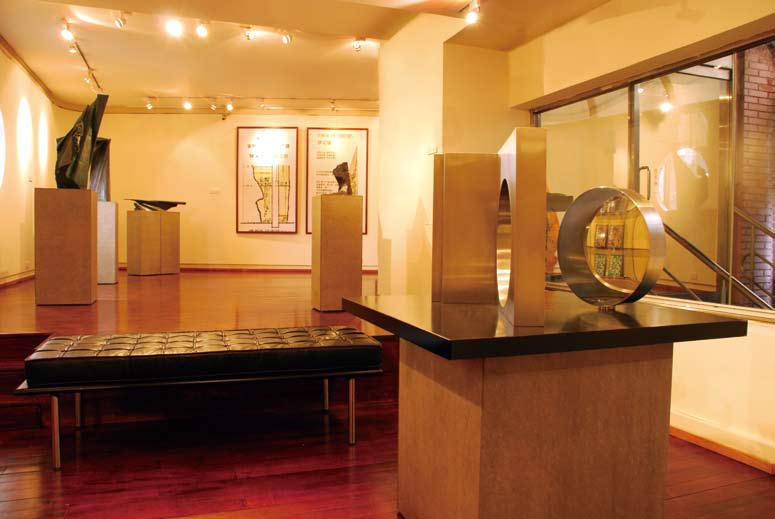 The design for the Yuyu Yang Museum was completed in 1992 by renowned Taiwan sculptor Yuyu Yang, who has since passed away. Today the facility is run by his eldest son, Yang Feng-chen, who has achieved his own fame as an artist impresario. At the museum, you can survey Yuyu Yang’s sterling body of artworks, and also see research groups working hard at compiling the key writings and essays he produced in his long life of productivity.
The design for the Yuyu Yang Museum was completed in 1992 by renowned Taiwan sculptor Yuyu Yang, who has since passed away. Today the facility is run by his eldest son, Yang Feng-chen, who has achieved his own fame as an artist impresario. At the museum, you can survey Yuyu Yang’s sterling body of artworks, and also see research groups working hard at compiling the key writings and essays he produced in his long life of productivity.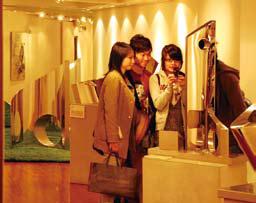 He was a visionary and virtuoso who attended the prestigious Tokyo School of Fine Arts in 1943, studying in the Department of Architecture. During his time there, he came under the wing of “the father of Japanese modern sculpture”, Fumio Asakura, absorbing his sense of landscape aesthetics. At the same time, the great Japanese architectural master of wood, Yoshida Isoya, had developed an intense interest in the lofty aesthetics of China’s Tang Dynasty architecture and was singing its praises, stimulating Yang’s lifelong passion for Chinese culture. In 1951, in the midst of Taiwan’s sweeping agricultural-reform program, he was appointed art editor at Fengnian (Bountiful Harvest) magazine. At that time, few, if any, in the agricultural community could read, so Yang used native woodblock prints and cartoons as vocabulary for communication, leaving behind a rich trove of rural-area portraits. In 1964, he launched himself on a three-year residency in Italy, allowing him a deep exploration of the aesthetic differences between East and West, and
He was a visionary and virtuoso who attended the prestigious Tokyo School of Fine Arts in 1943, studying in the Department of Architecture. During his time there, he came under the wing of “the father of Japanese modern sculpture”, Fumio Asakura, absorbing his sense of landscape aesthetics. At the same time, the great Japanese architectural master of wood, Yoshida Isoya, had developed an intense interest in the lofty aesthetics of China’s Tang Dynasty architecture and was singing its praises, stimulating Yang’s lifelong passion for Chinese culture. In 1951, in the midst of Taiwan’s sweeping agricultural-reform program, he was appointed art editor at Fengnian (Bountiful Harvest) magazine. At that time, few, if any, in the agricultural community could read, so Yang used native woodblock prints and cartoons as vocabulary for communication, leaving behind a rich trove of rural-area portraits. In 1964, he launched himself on a three-year residency in Italy, allowing him a deep exploration of the aesthetic differences between East and West, and 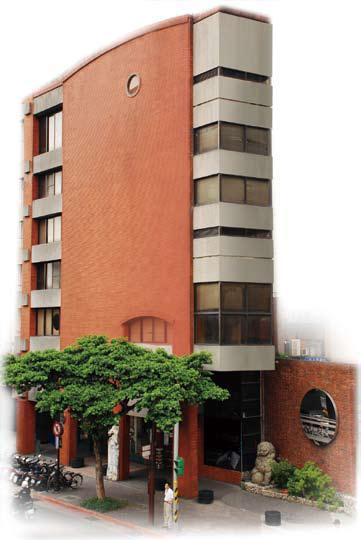 he reported, opening his eyes to the true meaning of the ancient Chinese philosophical concept of the “oneness of heaven and man”. After his return to Taiwan, he received an invitation from Hualien Marble Sculpture Co. and commenced a rich series of shanshui (landscape) works in stone. This marked a milestone for Taiwan’s art, for it was both the beginning of Yang’s work in stone sculpture and also the practice of public art on this land.
he reported, opening his eyes to the true meaning of the ancient Chinese philosophical concept of the “oneness of heaven and man”. After his return to Taiwan, he received an invitation from Hualien Marble Sculpture Co. and commenced a rich series of shanshui (landscape) works in stone. This marked a milestone for Taiwan’s art, for it was both the beginning of Yang’s work in stone sculpture and also the practice of public art on this land.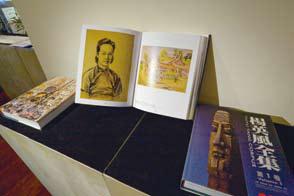
In seeking to encapsulate the oeuvre produced by Yuyu Yang in his artistically fecund lifetime, you might say the works of his later years focused on the mystery of the cosmos constituted his “Heaven” period, the shanshui series of the summer of his life his “Earth” period, and the images of the countryside of his youthful days his “Man” period. This is the artistic conception of his work arrived at by his son Feng-chen after 10 years compiling his vast portfolio. The holistic whole of the triumvirate “Heaven, Earth, Man” is the very essence of the Chinese philosophical universe, and amply demonstrates the man’s confidence and pride in the Chinese cultural and aesthetic heritage. Information Yuyu Yang Museum
Tel: (02) 2396-1966
Add: 1~3F, 31, Sec. 2, Chongqing S. Rd.
Hours: Tues~Sun 11:00-17:00 (closed on
Mon, national holidays)
※ Free admission
Website: www.yuyuyang.org.tw (Chinese)
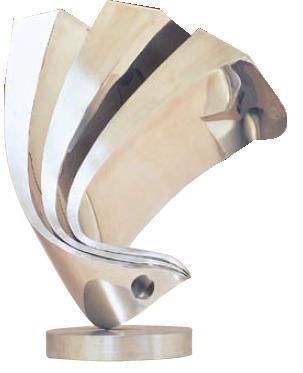 In addition to its permanent exhibits and lectures, the Yuyu Yang Museum stages largescale exhibits locally and overseas to promote idea interchange, organizes traveling exhibits, and handles other worthy events. In future days, the museum will add a digital focus to its interior facilities and also progressively make them more interactive. After all, even without including the many treasures he collected in his travels to the world’s four corners, Yang still was the creator for more than 1,000 individual artworks, and even if the museum space was further expanded, it would still be far too small to show the rich trove of his productive life.
In addition to its permanent exhibits and lectures, the Yuyu Yang Museum stages largescale exhibits locally and overseas to promote idea interchange, organizes traveling exhibits, and handles other worthy events. In future days, the museum will add a digital focus to its interior facilities and also progressively make them more interactive. After all, even without including the many treasures he collected in his travels to the world’s four corners, Yang still was the creator for more than 1,000 individual artworks, and even if the museum space was further expanded, it would still be far too small to show the rich trove of his productive life.

![Taiwan.gov.tw [ open a new window]](/images/egov.png)
